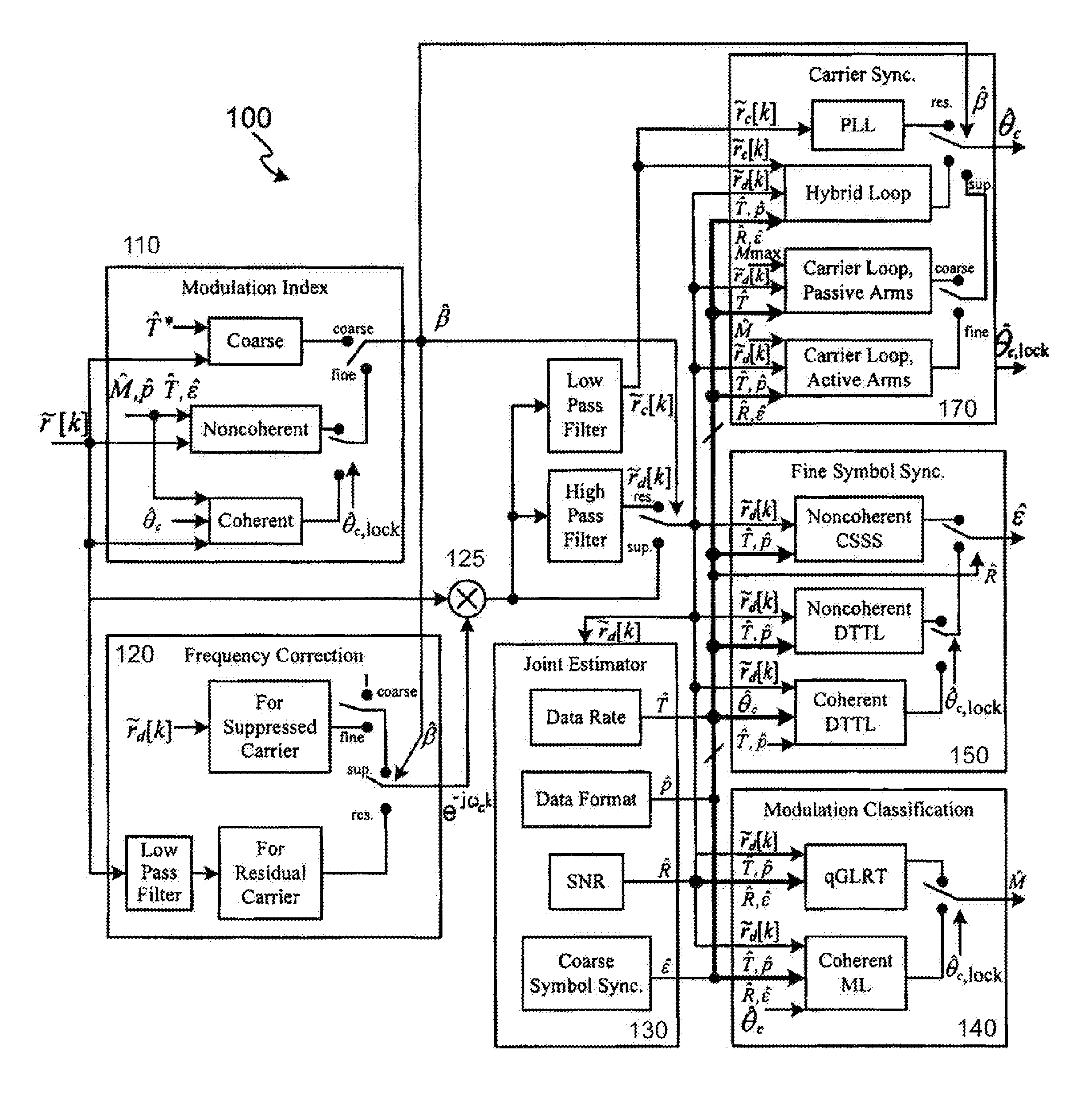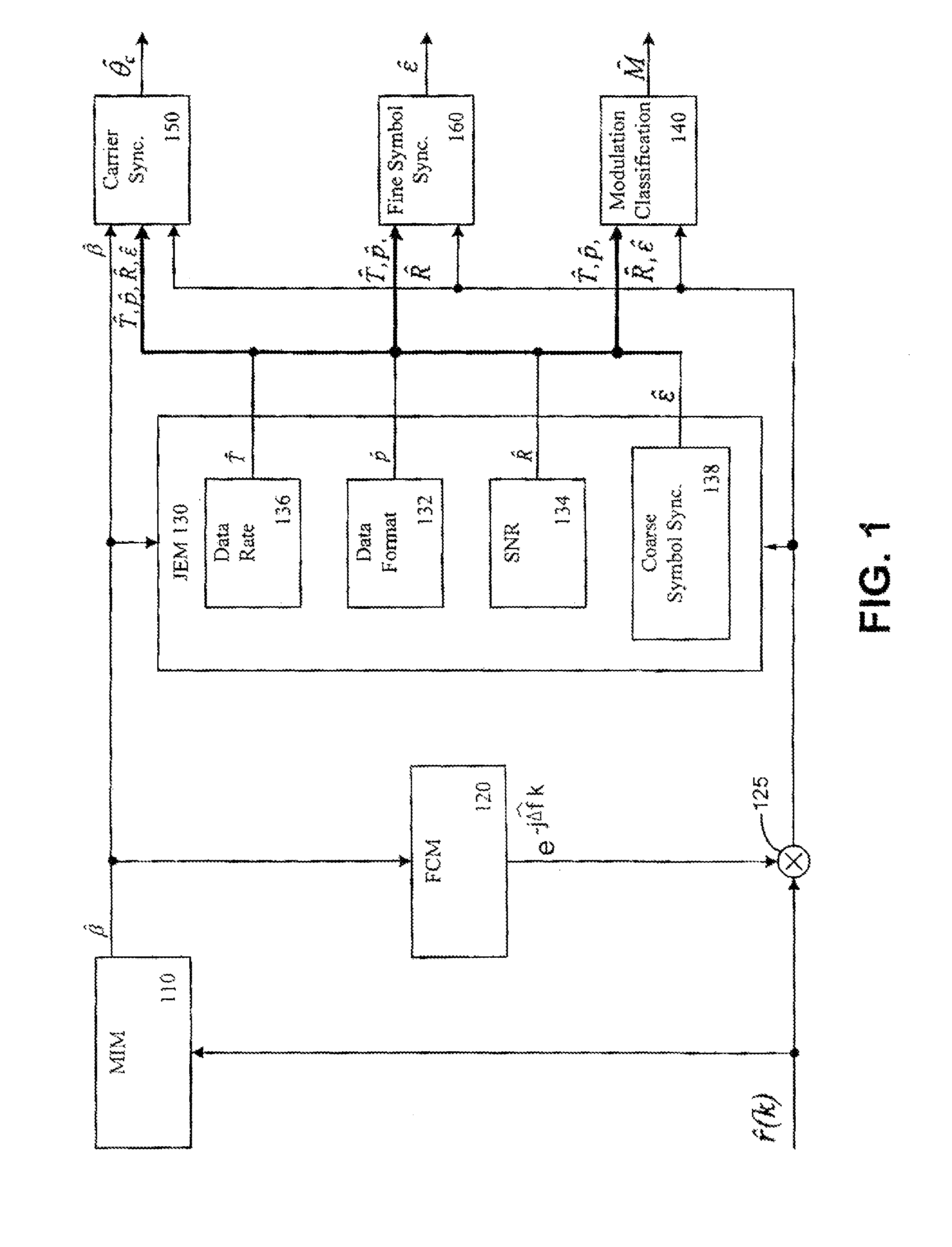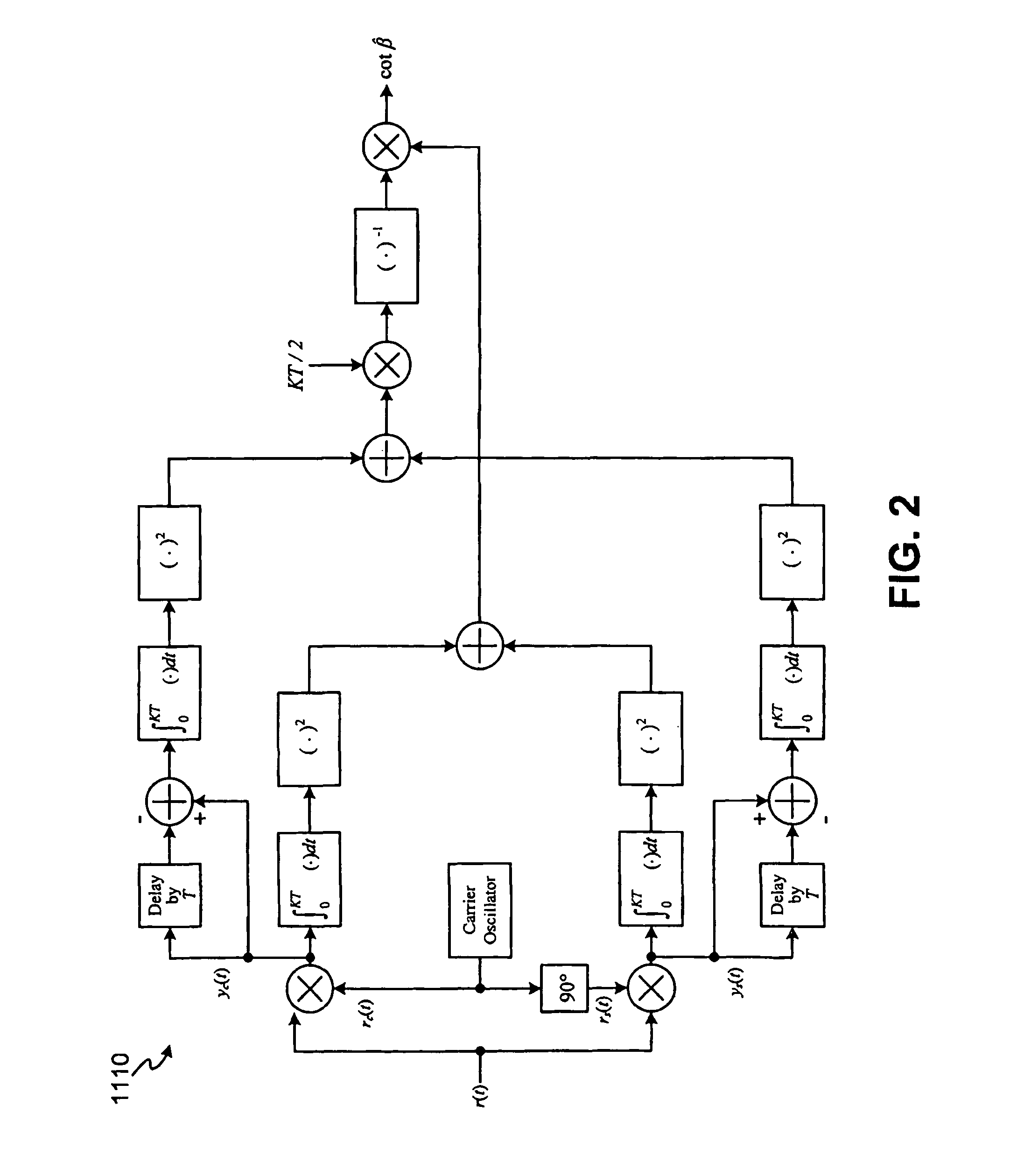Self-configurable radio receiver system and method for use with signals without prior knowledge of signal defining characteristics
- Summary
- Abstract
- Description
- Claims
- Application Information
AI Technical Summary
Benefits of technology
Problems solved by technology
Method used
Image
Examples
example 1
MIM 110 Coherent Estimation of Modulation Index For Binary Phase-Shift Keying (PSK) Signals
[0072]A received BPSK signal r(t) may be represented by the following equation (1):
[0073]r(t)=2Ptsin(ωct+β∑n=-∞∞cnp(t-nT))+n(t)
[0074]=2Ptcosβsinωct+2Ptsinβ∑n=-∞∞cnp(t-nT)cosωct+n(t)
[0075]=2Pcsinωct+2Pd∑n=-∞∞cnp(t-nT)cosωct+n(t)(1)
[0076]where p(t) is a pulse shape taking on values ±1 and satisfying T−1∫0Tp2(t)dt=1, T is the symbol rate, {cn} is a binary sequence which is treated as independent, identically distributed (IID) data taking on values ±1 with equal probability, β is the modulation index, ωc is the carrier frequency in rad / s, and n(t) is a bandpass additive white Gaussian noise (AWGN) source with single-sided power spectral density N0 W / Hz.
[0077]Based on the above AWGN model, then for an observation of K data intervals, the maximum likelihood (ML) modulation index estimation may be derived. Suitable approximations to the nonlinearity can b...
example 2
MIM Non-Coherent Estimation of Modulation Index For PSK Signals
[0091]In another embodiment, MIM 110 performs modulation index estimation for the case where carrier synchronization has not yet been established (i.e., where the carrier phase is random). In the non-coherent case, the modulation index estimate is formed in the absence of carrier synchronization. For BPSK modulation, the received signal is again modeled as in equation (1) with the addition of an unknown (but assumed to be uniformly distributed) carrier phase to both the discrete and data-modulated carriers. This allows a non-coherent estimator of modulation index:
[0092]cosβ^=2[(∫0KTyc(t)ⅆt)2+(∫0KTys(t)ⅆt)2]KT[(∫0KT(yc(t)-yc(t-T))2ⅆt)2+(∫0KT(ys(t)-ys(t-T))ⅆt)2](10)
[0093]In the absence of noise this estimator produces the true value of modulation index.
[0094]In yet another embodiment, MIM 110 performs modulation index estimation for the case when the modulation type symbol timing and data rate are als...
PUM
 Login to View More
Login to View More Abstract
Description
Claims
Application Information
 Login to View More
Login to View More - R&D
- Intellectual Property
- Life Sciences
- Materials
- Tech Scout
- Unparalleled Data Quality
- Higher Quality Content
- 60% Fewer Hallucinations
Browse by: Latest US Patents, China's latest patents, Technical Efficacy Thesaurus, Application Domain, Technology Topic, Popular Technical Reports.
© 2025 PatSnap. All rights reserved.Legal|Privacy policy|Modern Slavery Act Transparency Statement|Sitemap|About US| Contact US: help@patsnap.com



